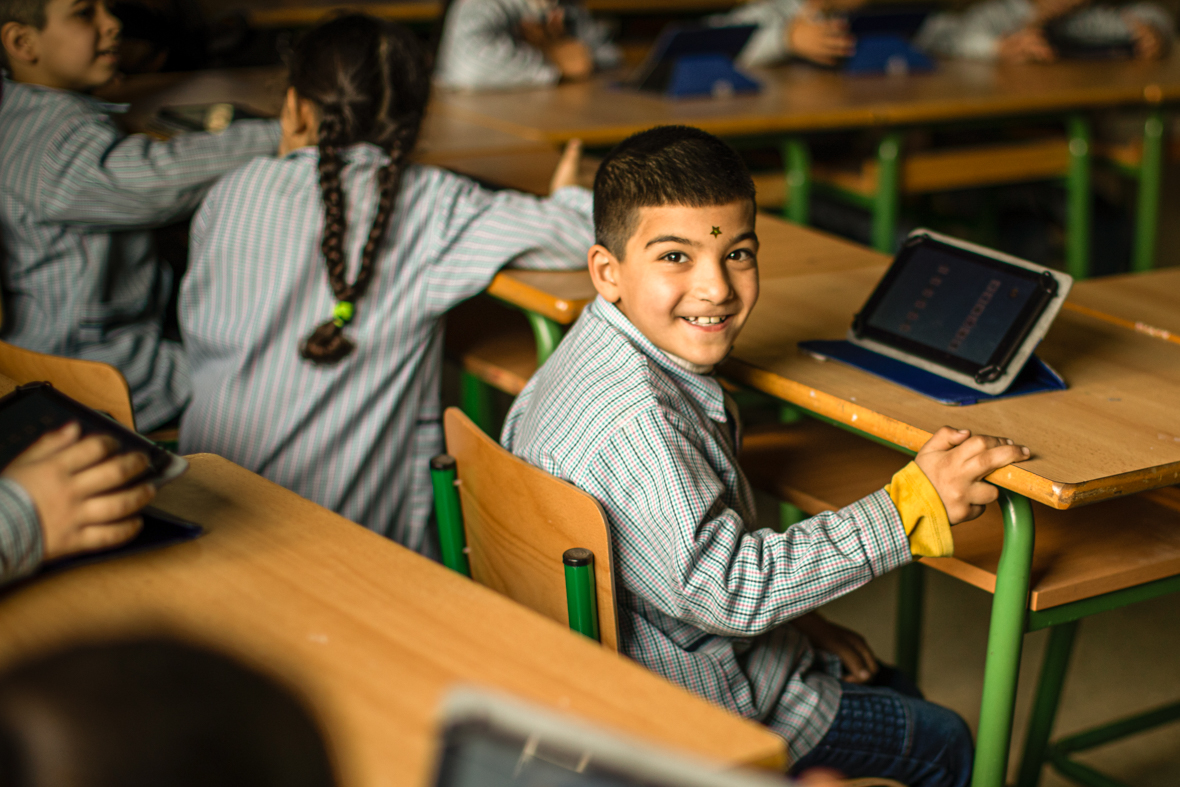
Finance must not hold us back from achieving our education ambitions
Education funding
Manos Antoninis is Acting Director of the EFA Global Monitoring Report. Here he explains the finance gap that exists in global education.
In 2000, world leaders gathered together and committed to a Framework of Action in Dakar that included a commitment that no country should be left behind in achieving Education for All goals due to lack of resources.
Today, a year from the deadline to achieve Education for All, a failure to reach this promise has left an annual finance gap to achieve good-quality basic education for all by 2015 of US$26 billion – putting the goal of getting every child into school far out of reach.
Unfortunately, donors seem more likely to reduce their aid than increase it in coming years. Unless urgent action is taken to change aid patterns, the goal of ensuring that every child is in school and learning by 2015 will be seriously jeopardised.
The Dakar Framework for Action did not establish how much countries should commit to education. In recent years, however, domestic spending has increased, and particularly in poorer countries, partly because of improvements in their economic growth.
Government spending on education increased from 4.6% to 5.1% of gross national product (GNP) between 1999 and 2011, on average. In poorer countries it rose faster: 30 of these countries increased their spending on education by one percentage point of GNP or more between 1999 and 2011.
Having no formally set goal for how much donors should give to education, however, has resulted in a large finance gap for the sector. Even before the economic downturn, donors were off track to fulfill their education finance promises.
Between 2010 and 2011, aid to basic education also declined for the first time, by 6%, with poorer countries bearing the brunt. Our report forecasts that many poor countries will see their levels of aid cut further by 2015 putting education goals even further out of reach.
Ambitions are high for the future of education after 2015. The UN-led MyWorld2015 has just run one of the largest ever surveys with almost 1.5 million people to assess what people hope the world will prioritise in new global development goals.
Two out of three of those people – almost one million people – said that education is one of their top six priorities for a better world. If we are to answer this common call for education to be prioritised in the future, we will need to make sure the finances are there to make progress possible.
In order to hold donors and governments to account for their financial commitments, and to ensure greater transparency, a common financing target for new education goals must be set after 2015.
Countries should allocate at least 6% of their GNP and at least a fifth of their budget to education. Currently, less than a third of the countries with data spend 6% or more of GNP on education and the global average of budgets being spent on education was only 15%, a proportion that has hardly changed since 1999.
These are not overly ambitious targets: governments can easily increase the funds available for education if they expand their tax base and tap into the potential for economic growth.
Our latest report also reveals that there is a huge time lag between the date that the richest boys and the poorest girls will reach global education goals.
This implies that it not only necessary to increase resources for education but also to ensure that they are spent on improving education opportunities for the most marginalised.
The children and young people who are hardest to reach – such as the poor, those who live in remote locations, members of ethnic and linguistic minorities, girls, and those with disabilities – are often the last to benefit from education spending. So special efforts are needed to make sure these funds reach them.
When balancing the books for education today, it is clear that we have lessons to learn from the path that has been trodden since 2000.
The lesson is clear: the post-2015 framework must include explicit financing targets, demanding full transparency, so that all donors are accountable for their commitments, and finance gaps do not thwart our promises to children.
How much do you know about the cost of global education? Try our fun and informative quiz.
More news

